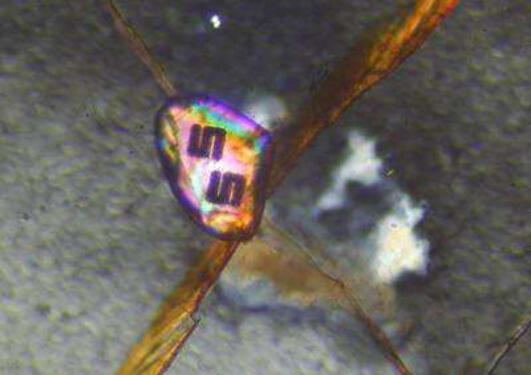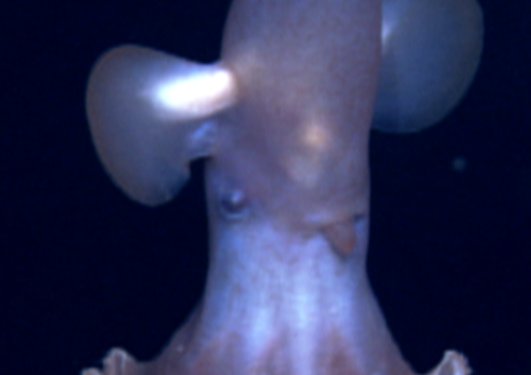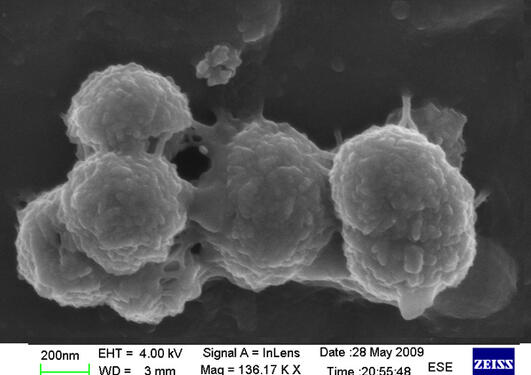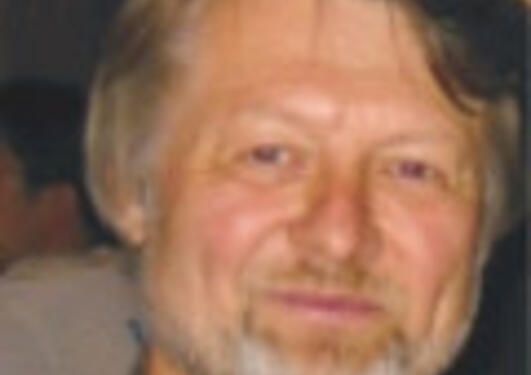News archive for Centre for Geobiology
It is not uncommon in Earth and environmental sciences that we need to study chemical and isotopic composition of solid samples on sub-microscopic scale. This is because many minerals and biological samples are heterogeneous and it is those variations on small scale that provide the most valuable information about the sample’s formation and history. For this reason, geologists have often been the... Read more
The Bergen Geoanalytical Facility - BGF (formerly CEIA) was established around several existing geoanalytical techniques at the University of Bergen and it was officially opened on 29th September 2005.
(from Geoviten-ekstern 18.12.2009) The department has recently installed a new Raman spectrometer at the Bergen Geoanalytical Facility on the second floor in Realfagbygget.
(from Geoviten-ekstern 18.12.2009)
Our planet is a work of life. Biological and geological processes have been inextricably linked since life first emerged on Earth. Learning more about when and where life first evolved is central to understanding how geobiological systems have shaped our planet. The answers to these questions are preserved in sparse and fragmentary early Archean rocks that... Read more
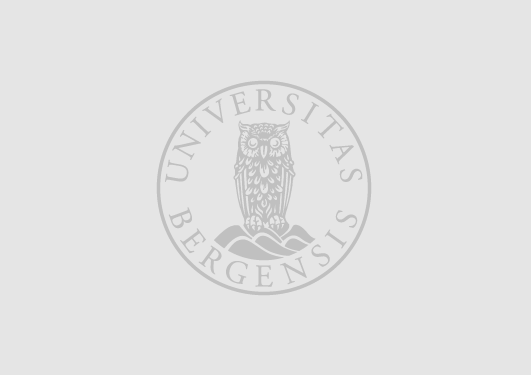
Det norske forskningsskuta "G.O. Sars" havner i klasse med verdens største containerskip og bilfrakteverktøy i dokumentaren "Mighty Ships".

DNA-sequencing gives us the possibility to study the genetic code of all living organisms. Many researchers today take advantage of developments in molecular biology technology that have led to the development of massive parallel pyrosequencing.
CGB researchers re-visited Loki's Castle, the world's northernmost identified Black Smoker, and Håkon Mosby Mud Volcano. This year Discovery channel was also onboard.
CGB will be taking an active role in an Astrobiology summer school addressing these issues 29 June-13 July 2009. Professor Nils-Kåre Birkeland will be one of the lecturers, lecturing on the "Genetics of thermophiles" and the "Molecular basis of the stability of biomoleculees in hot environments". Researcher Ida Helene Steen and research assistant Solveig Hoem are leading some of the lab courses... Read more
Guest researcher and mineralogist Beata Smieja-Król says that peatland is only interesting when it is polluted!
Professor Lise Øvreås is participating in a research cruise in the Lau basin, east of Fiji, where scientists are investigating extreme organisms living around the hydrothermal vents found there.
Written by Friederike Hoffman, Sars Centre.
Sponges are major constitutes of coral reef and deep sea communities. They excrete high amounts of ammonium and, due to the activity of associated microorganisms, nitrite and nitrate; these are essential nutrients, and sponges are thus considered as important nutrient sources in the marine ecosystem.
In 2000 during an oceanographic cruise a group of researchers stumbled upon a unique discovery – a completely new kind of hydrothermal vent field.
Preliminary analysis of 3650m of pristine rock core is revealing some unexpected data that may provide insights into perhaps the earliest perturbations of the global carbon cycle.

A book chapter by Vigdis Torsvik and Lise Øvreås... The book is entitled: Microbial diversity, life strategies, and adaptation to life in extreme soils. I: Microbiology of Extreme Soils. Springer 2008 ISBN 978-3-540-74230-2. s. 15-43.
They are studying the microorganisms found around the hostile environments found in the deep sea and at hydrothermal vents to learn more about how they collaborate to build up chemosynthetic ecosystems that support unique communities of larger organisms.
Pages
- February 2025 (1)
- October 2024 (1)
- September 2024 (1)
- August 2024 (1)
- April 2024 (1)
- May 2017 (1)
- January 2017 (1)
- December 2016 (1)
- November 2016 (1)
- October 2016 (1)
- September 2016 (1)
- June 2016 (1)
- May 2016 (2)
- April 2016 (1)
- January 2016 (1)
- November 2015 (2)
- October 2015 (2)
- July 2015 (1)
- June 2015 (1)
- May 2015 (2)
- February 2015 (1)
- September 2014 (1)
- June 2014 (1)
- May 2014 (3)
- March 2014 (2)
- December 2013 (3)
- November 2013 (1)
- October 2013 (2)
- August 2013 (1)
- June 2013 (1)
- May 2013 (1)
- April 2013 (2)
- February 2013 (1)
- January 2013 (2)
- December 2012 (1)
- October 2012 (1)
- September 2012 (1)
- August 2012 (1)
- January 2012 (1)
- December 2011 (1)
- November 2011 (3)
- October 2011 (1)
- September 2011 (5)
- July 2011 (3)
- June 2011 (4)
- May 2011 (1)
- April 2011 (2)
- March 2011 (3)
- February 2011 (1)
- January 2011 (1)
- November 2010 (3)
- October 2010 (1)
- September 2010 (1)
- June 2010 (3)
- May 2010 (1)
- April 2010 (3)
- March 2010 (1)
- February 2010 (3)
- January 2010 (2)
- September 2009 (1)
- August 2009 (2)
- July 2009 (1)
- June 2009 (4)
- March 2009 (2)
- February 2009 (1)
- January 2009 (1)
